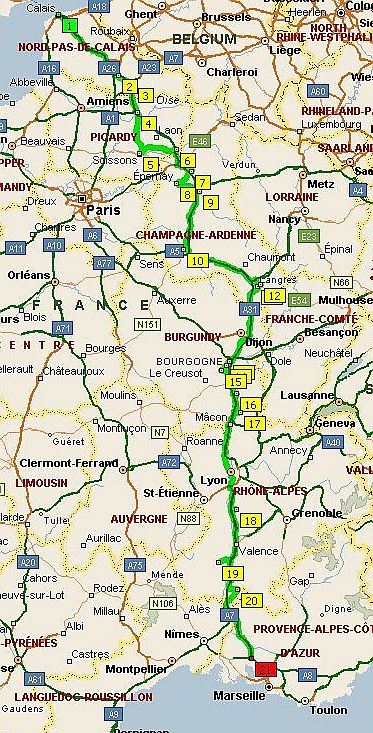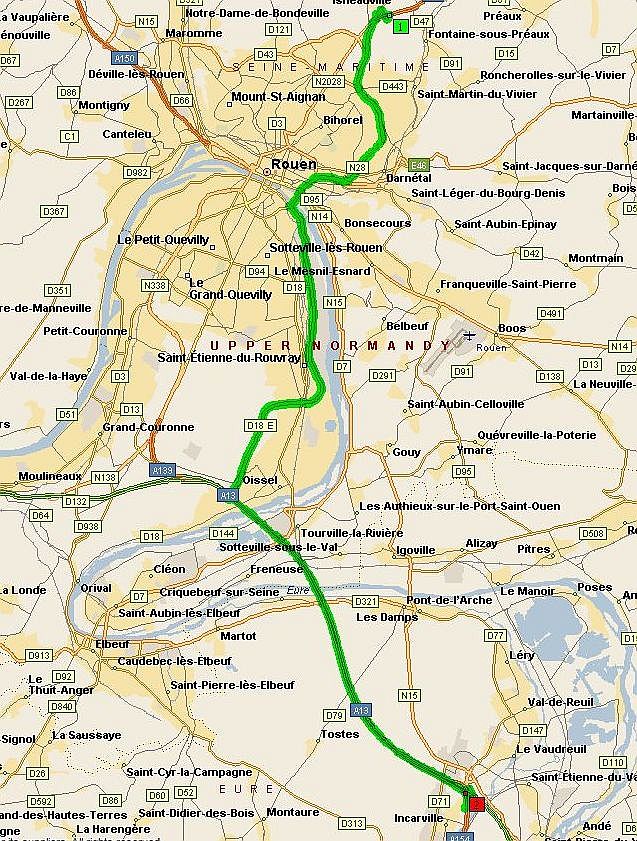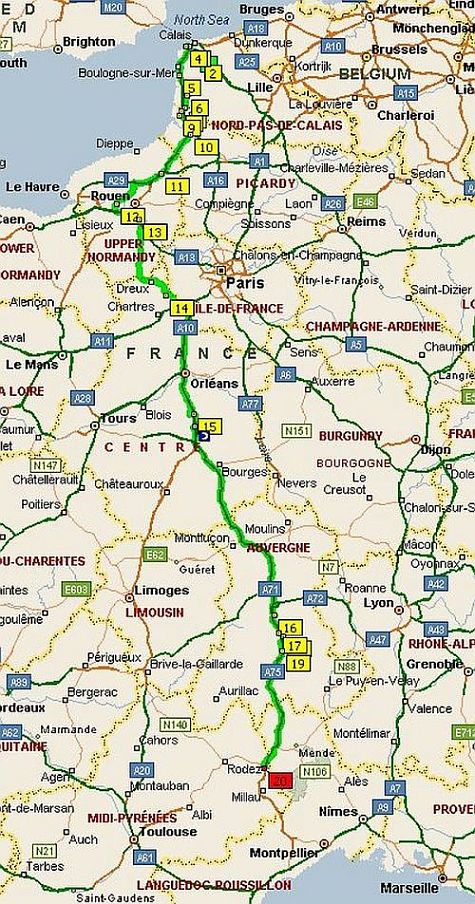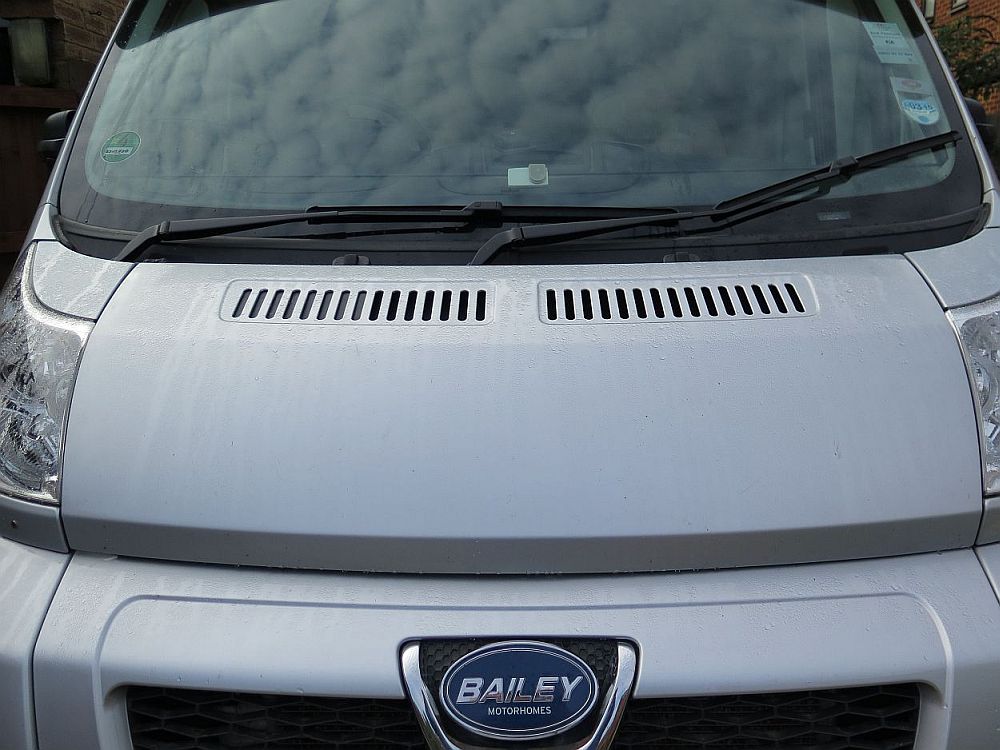The Route South
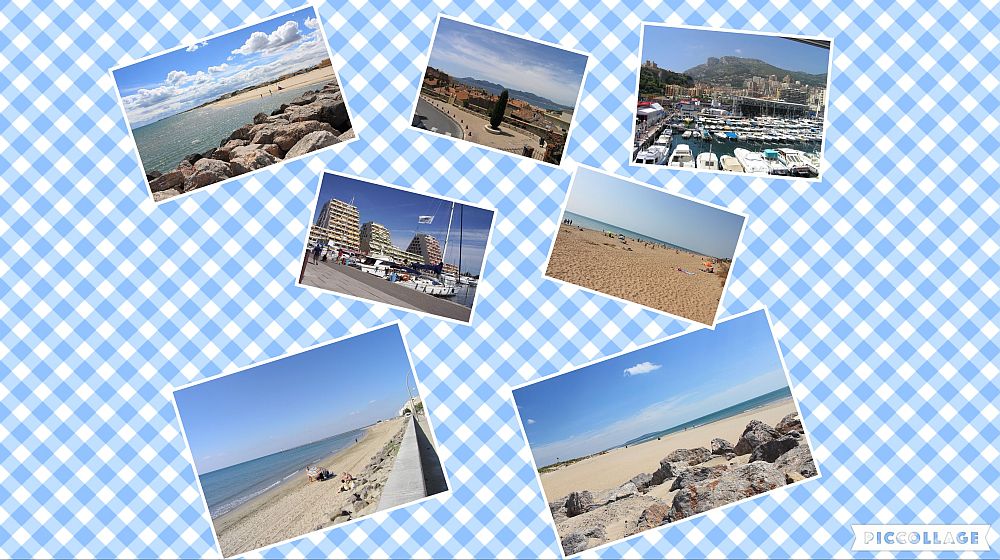
I first wrote this page over 14 years ago and many things have changed since then with new routes giving an extended choice of getting to the Mediterranean Coast and beyond. Long before we retired we used to try and get down to the south coast of France for our summer break. Traditionally this would involve taking the Autoroutes due south of Calais and right down through the middle of France via Lyon. The advantage of this route is that many miles can be achieved in a day and you get to your destination pretty quick. We once did the journey back in two days which meant at least one day of driving 400 miles, not that we would do that now! It is also not particularly challenging in terms of gradients. This is probably the best route for those going to destination along the coast towards Cannes, Nice and Monaco. However this motorway is, from Macon south, very busy and if you do the whole journey on motorway it is also quite expensive. Some won't mind that but others might want to save money by using a different route. For those using crossings from Portsmouth westwards the western route down through France might be preferred and even those using the Dover-Calais crossing the western route is quite popular, especially as much of it is tool free on motorway standard roads. I will set out below my take on the routes and listing campsite that we have used en route.
Route Descriptions
The Central Route
This starts at Calais and heads due south on the A26, appropriately named the Autoroute des Anglais. Reims is the first major city where the road number changes to the A4 briefly until that branches off towards Metz and the German border. At Chalons en Champagne it reverts to the A26 until you get to Troyes where it becomes the A5 to Langres and then the A31 to Beaune. South from her to Lyon it becomes the A6. At Lyon you have the choice of going through the centre of the city or skirting round to the east rejoining the main motorway just north of Vienne where the motorway becomes the A7. At Orange the A7 heads out east towards Cannes and Nice eventually joining the Italian motorway system the other side of Monaco. The other branch of the coastal motorway heads south/west from Orange is designated the A9 all the way to the Spanish border.
Toll or not to toll? There is no one answer to this. Many non motorway roads in France are excellent and good progress can generally be made. However in order to force heavy goods onto the motorways and away from towns an villages on the ordinary roads a lot of traffic calming has been introduces which makes using those road less pleasant unless you have lots of time and only planning relatively short journeys between stops. What I would suggest as a worthwhile purchase is the Michelin yellow road atlas of France, the spiral bound version might be easier for the navigator! This would allow you to pre-plan where to use tolls and where you might made good progress off toll. This atlas make it easier to identify those towns and villages which have bypasses to speed the journey. North of Troyes there are a couple of sections where using the old "N" roads can make a pleasant detour off the motorway. Other sections of the journey will require one village after another where traffic never gets the chance to get going.
En Route Campsites
There are more than enough campsite along the route to Orange for overnight stops or perhaps a bit longer. I have listed the ones I know on the map below, each number on the map relates to a campsite with links to the reviews on the right hand side. I have only listed the ones I have actually stayed at. There will be many more not listed.
The Western Route
Since the completion of the A75 some years ago south of Clermont Ferrand it has opened up a new route to the Mediterranean at Beziers. Most route planners will want to take you via Paris via the A26/A1 and then round the southern bypass of Paris. There is not much wrong with this route except that the roads around Paris can get very busy, a bit like our own M25. I think it fair to say that many prefer to go via Rouen as this route makes maximum use of non-toll roads, many of them being either free motorways or dual carriage ways.
From Calais this route takes the A16 free coastal motorway to Boulogne, from here to Abbeville there is a toll but there after to Rouen it becomes toll free again. Some people are a bit nervous of navigating through Rouen but it is fairly straightforward providing you follow the signs for the N154 towards Evreux. It is mainly dual carriageway but with several sets of traffic lights and a couple of roundabouts. See map of route below. Once through Rouen and onto the A13 you have two choices. The toll route swings out to the west where you eventually join the A28 towards Le Mans. For the for the more toll free route to swing east to join the N154 southwards through Evreux, Dreux and Chartres. The N154 continues towards Orleans but it is recommended to join the A10 motorway to bypass the City and join the A71 south to near Vierzon you have another choice of route. You can take the A20 which is a very good road and handy for the Dordogne and eventually takes you to Toulouse where you join the A61, via Carcassonne, before reaching the coast at Narbonne. This route is a mix of toll and non-toll roads. Alternatively, and perhaps the most common route south these days is to continue on the A71 to Clermont Ferrand and then take the A75 free motorway south towards Millau and the wonderful Millau Viaduct, for which there is a toll. The A75 crosses the Massif Central and climbs to about 1100 metres above sea level. However it is a well engineered road so should not present too many issues for vehicles with a reasonable power to weight ratio. Once over the plateau south of Millau the road is twisty before reaching the coastal plain and downhill there are speed limits in place. Two spurs of the motorway will either take you to Montpellier or Beziers.
